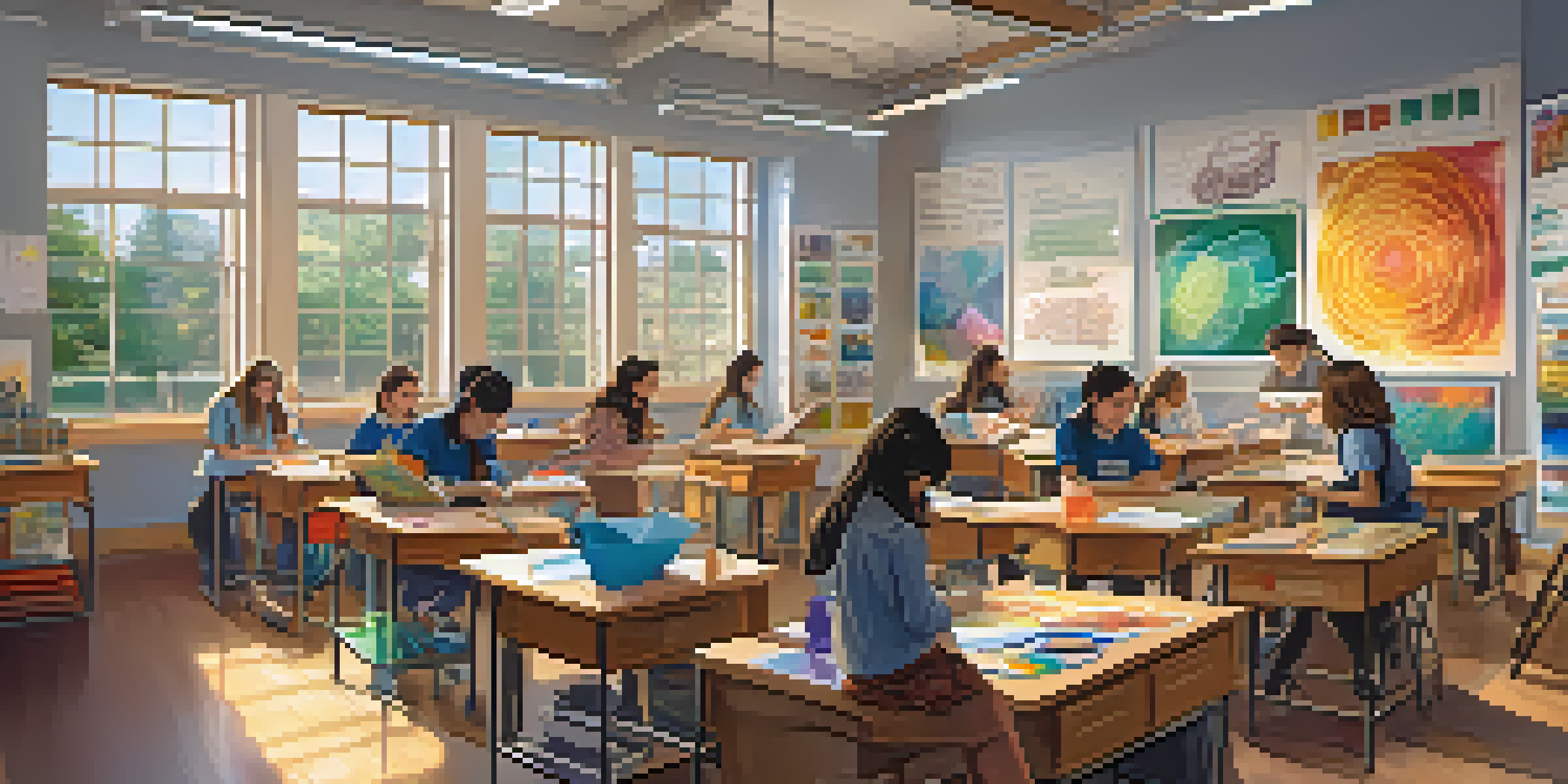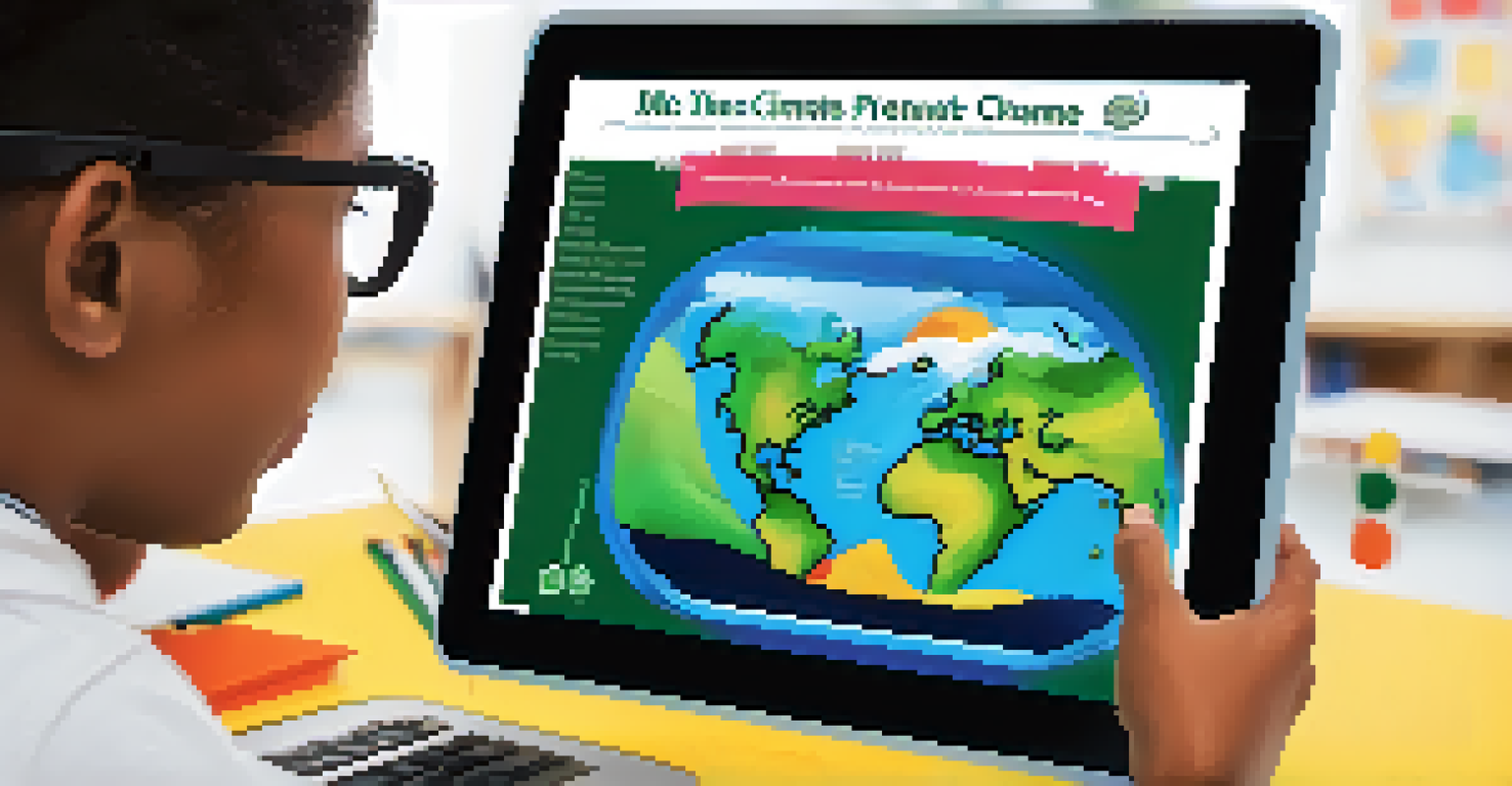Strategies for Implementing Interdisciplinary Learning

Understanding Interdisciplinary Learning and Its Benefits
Interdisciplinary learning (IDL) blends different subjects to create a cohesive learning experience. This approach encourages students to make connections across disciplines, enhancing their overall understanding. For example, a project combining science and art allows students to explore the scientific principles of color while expressing creativity.
Education is not the filling of a pail, but the lighting of a fire.
The benefits of IDL extend beyond academic achievement. It fosters critical thinking and problem-solving skills as students tackle real-world issues from multiple perspectives. Imagine students working on environmental sustainability; they would engage in science, economics, and social studies to propose comprehensive solutions.
Moreover, interdisciplinary learning promotes collaboration among students, encouraging them to value diverse opinions and approaches. When students work together across subjects, they learn the importance of teamwork, which is a crucial skill in today’s workplace.
Designing an Interdisciplinary Curriculum Framework
Creating an effective interdisciplinary curriculum starts with clear objectives. Educators should identify the competencies and outcomes they want students to achieve, ensuring alignment with educational standards. For instance, a unit on climate change can incorporate science, social studies, and even art to help students understand the topic thoroughly.

Next, it's essential to establish connections between subjects. Teachers can collaborate to create thematic units that highlight how disciplines interrelate. This not only enriches the learning experience but also makes lessons more engaging and relevant to students’ lives.
Benefits of Interdisciplinary Learning
IDL enhances critical thinking and collaboration by encouraging students to tackle real-world issues from various perspectives.
Lastly, flexibility in the curriculum is key. As educators implement IDL, they should be open to adapting their plans based on student interests and feedback. This responsiveness can lead to deeper engagement and a more meaningful learning journey.
Fostering Collaboration Among Educators
Collaboration among educators is crucial for successful interdisciplinary learning. Teachers from different subjects must communicate and share ideas to create a unified learning experience. Regular meetings or professional development workshops can provide platforms for brainstorming and planning joint lessons.
The more that you read, the more things you will know. The more that you learn, the more places you'll go.
For example, a science teacher and an English teacher might collaborate on a project where students write persuasive essays about environmental issues they studied in science class. This not only enhances their writing skills but also reinforces their understanding of scientific concepts.
Encouraging a culture of teamwork among educators can also lead to innovative teaching methods. When teachers feel supported and inspired by their peers, they are more likely to take risks and experiment with new interdisciplinary strategies.
Incorporating Technology in Interdisciplinary Learning
Technology plays a vital role in enhancing interdisciplinary learning. Tools like digital presentations, collaborative platforms, and online research databases allow students to explore topics from various angles. For instance, using video editing software, students can create documentaries that combine research, storytelling, and visual arts.
Additionally, technology can facilitate communication and collaboration among students and teachers. Platforms like Google Classroom enable seamless sharing of resources and project updates, making it easier to manage interdisciplinary projects.
Designing Effective Curriculums
An interdisciplinary curriculum should have clear objectives, establish connections between subjects, and remain flexible based on student feedback.
Moreover, integrating technology into IDL can cater to different learning styles. Visual learners, auditory learners, and kinesthetic learners can all benefit from the diverse resources available online, making lessons more inclusive.
Engaging Students in Real-World Problem Solving
One of the most effective strategies for IDL is engaging students in real-world problem-solving. When students work on authentic issues, they can see the relevance of their learning. For example, tackling local environmental concerns encourages students to apply scientific knowledge while considering social impacts.
This hands-on approach not only makes learning enjoyable but also instills a sense of responsibility in students. They learn that their actions can have significant consequences, fostering a deeper understanding of the interconnectedness of global issues.
Furthermore, real-world projects often require students to research, collaborate, and think critically. These skills are invaluable, preparing them for future challenges in both their academic and personal lives.
Assessment Strategies for Interdisciplinary Learning
Assessing student progress in interdisciplinary learning can be challenging but essential. Traditional assessments may not fully capture the learning outcomes of IDL, so educators should explore alternative methods. For instance, project-based assessments allow teachers to evaluate how well students integrate knowledge from different disciplines.
Rubrics can be tailored to measure specific skills such as collaboration, creativity, and critical thinking alongside subject knowledge. This holistic approach gives a comprehensive view of student performance and areas for improvement.
Role of Technology in IDL
Technology enriches interdisciplinary learning by providing diverse resources and facilitating collaboration among students and teachers.
Additionally, self-assessment and peer feedback can empower students to reflect on their learning. Encouraging students to assess their contributions and understandings fosters a sense of ownership over their educational journey.
Creating a Supportive Learning Environment
A supportive learning environment is essential for successful interdisciplinary learning. Students need to feel safe to express their ideas and take risks in their learning. Teachers can establish this environment by promoting open communication and encouraging respectful discussions.
Incorporating elements of choice into the learning process also contributes to a positive atmosphere. When students are given a say in their projects or topics, they are more likely to engage deeply and take pride in their work.

Moreover, celebrating successes—big or small—can boost student morale and motivation. Recognizing collaborative efforts and innovative thinking reinforces the value of interdisciplinary work and encourages students to continue exploring beyond traditional boundaries.